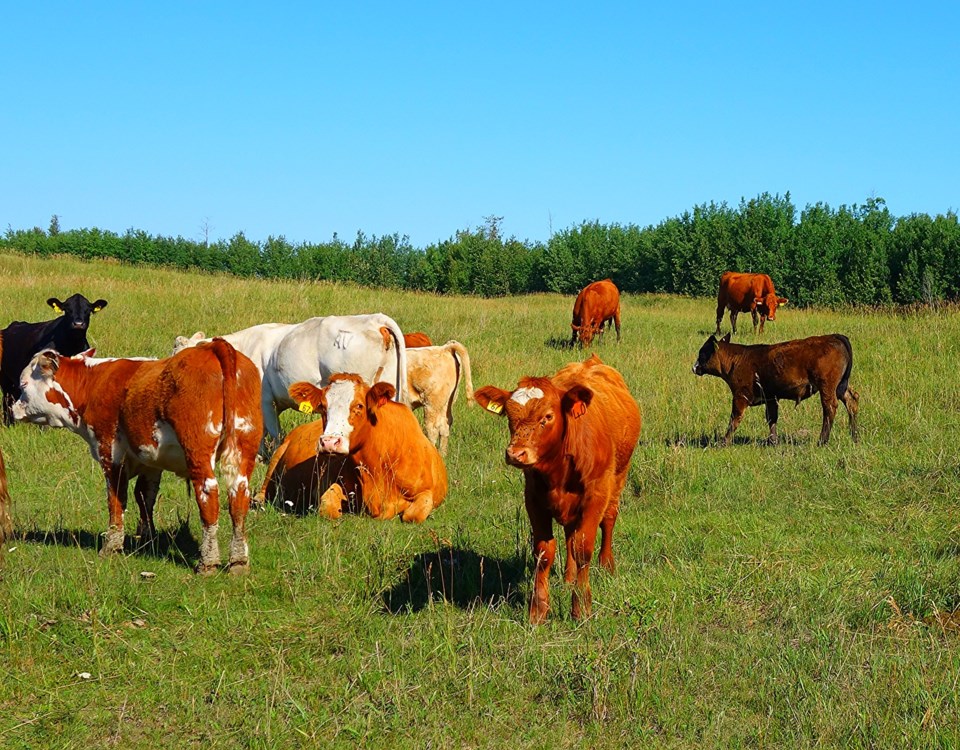Alberta’s grasslands are stable, long-term carbon sinks, and a project led by University of Alberta researchers aims to store an additional 32.5 megatonnes of carbon in the prairie soil.
The project will compare carbon sequestration and greenhouse gas emissions between continuous and rotational cattle grazing techniques. Earlier research suggests more carbon is stored in the soil when rotational techniques are used. This project will establish a standardized comparison between the two grazing treatments and use genomic technologies to develop rapid bioindicators to measure carbon sequestration in the soil.
“It's quite an ambitious project,” said Carolyn Fitzsimmons, bovine genetics researcher and project co-lead.
“It's one of the first projects that really takes all aspects that we can test right now, comparing these two different grazing systems on ecosystem level responses to the implementation of improved grazing practices,” she said.
Researchers will measure the “whole system response” to cattle grazing, from soil microbes to calf growth and the emissions released throughout.
“We're looking at all aspects in the soil, and we're looking at aspects in vegetation, and we're looking at what's happening in animals. And by doing that we can make connections and see how one affects the other, and how the carbon is linked throughout that system,” Fitzsimmons said.
The multi-disciplinary team behind the project is made up of 33 researchers and academics from the University of Alberta, the University of Saskatchewan, and Agriculture and Agri-Food Canada.
There are approximately 15 million hectares of grazing land in the Canadian prairies, including 11.5 million hectares of native prairie grassland. By finding bioindicators of carbon sequestration in soil, that data could be used in carbon markets or incentive programs that help preserve grassland ecosystems.
“If we can find those bio indicators, and test them across different soil types and ecosystems, and find robust indicators of carbon sequestration, they can be the basis of evidence for carbon market that would actually reward producers that implement these practices and improve carbon sequestration from the atmosphere,” she said.
For farmers faced with the choice of using land for grazing or cultivating for crop production, carbon offset markets or conservation incentives could compensate them for preserving pastureland and prevent the historic carbon in the soil from being broken up and lost.
“If they're getting paid, or financially rewarded for keeping that land in a grazing system, then they wouldn't be so willing to cultivate that land and plant annual crops,” Fitzsimmons said.
The cattle grazing research has received over $6 million in funding from Genome Canada and was also one of three Accelerating Agricultural Innovation projects invested in by Results Driven Agriculture Research (RDAR) as part of the new Sustainable Canadian Agriculture Partnership.
Jointly funded by Agriculture and Agri-Food Canada and Alberta Agriculture and Irrigation, the RDAR investments are intended to make Canada’s food and agriculture sectors more innovative and resilient.
“RDAR is committed to advancing agriculture through genomics, and we foresee the projects announced today accelerating the adaptation of crops to climate change and the drive to sustainable livestock production,” CEO Mark Redmond said in a news release.
“This work is essential as Alberta agriculture responds to climate change, builds a more resilient industry, serves new, environmentally conscious high-value markets, and returns greater profits to producers.”




.jpg;w=120;h=80;mode=crop)